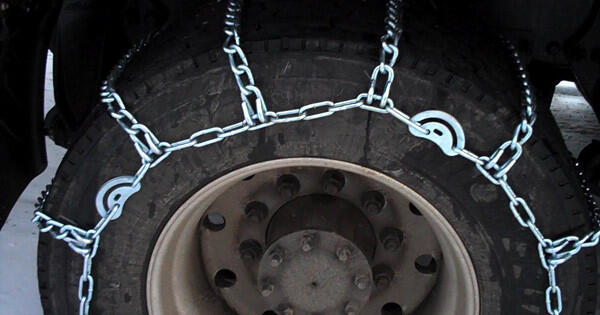Are You Sharing Your Driver with Another Company?
Read this weeks safety bulletin to learn how to address multiple employers' use of a driver! Make sure you are getting all safety bulletins straight to your inbox and subscribe here.
How does the Federal Motor Carrier Safety Administration address multiple employers' use of a driver?
Answer: This situation is addressed in several ways throughout the regulations; however, it needs to be clarified. Drivers that work part-time fall into several classifications:
- Drivers who work for multiple employers regularly.
- Drivers regularly employed by a motor carrier and occasionally drive for another motor carrier.
- An employee of a non-motor carrier who occasionally or part-time drives.
Let's look at the driver qualification process:
Multiple Employer Drivers
A multiple-employer driver is a driver who, in 7 consecutive days, is employed or used as a driver by more than one motor carrier. This definition applies to a driver who works part-time for two or more employers.
Suppose a motor carrier employs a person as a multiple-employer driver (as defined in §390.5 of this subchapter). In that case, the motor carrier shall comply with all requirements of this part, except that the motor carrier need not:
- Require the person to furnish an employment application per §391.21.
- Make the investigations and inquiries specified in §391.23 concerning that person.
- Perform the annual driving record inquiry required by §391.25(a);
- (a)(4) Perform the annual review of the person's driving record required by §391.25(b); or
- (a)(5) Require the person to furnish a record of violations or a certificate per §391.27.
- b) Before a motor carrier permits a multiple-employer driver to drive a commercial motor vehicle, the motor carrier must obtain their name, social security number, identification number, type, and issuing State of their commercial motor vehicle operator's license. The motor carrier must maintain this information for three years after employment of the multiple-employer driver ceases.
A driver who is regularly employed by a motor carrier and occasionally works for another motor carrier:
§391.65(a) A motor carrier may hire a driver who is not a regularly used driver of that motor carrier without complying with the generally applicable driver qualification file requirements in this part if:
- Another motor carrier regularly employs the driver, and...
- The motor carrier that regularly employs the driver certifies that the driver is fully qualified to drive a commercial motor vehicle in a written statement which—
- It is signed and dated by an officer or authorized employee of the regularly employing carrier.
- Contains the driver's name and signature.
- Certifies that the driver has been regularly employed as defined in §390.5;
- Certifies that the driver is fully qualified to drive a commercial motor vehicle under the rules in Part 391 of the Federal Motor Carrier Safety Regulations.
- States the expiration date of the driver's medical examiner's certificate.
- Specifies an expiration date for the certificate, which shall be no longer than 2 years or, if earlier, the expiration date of the driver's current medical examiner's certificate; and
- A motor carrier that obtains a certificate under paragraph (a)(2) of this section shall:
- Contact the motor carrier that certified the driver's qualifications under this section to verify the certificate's validity. Contact the motor carrier in person, by telephone, or by letter.
- Please retain a copy of that certificate in its files for three years.
- A motor carrier that certifies a driver's qualifications under this section shall be responsible for the accuracy of the certificate. The certificate is no longer valid if the driver leaves the employment of the motor carrier that issued the certificate or is no longer qualified under the rules in this part.
An employee of a non-motor carrier who occasionally or part-time drives for a motor carrier:
A person who drives for one motor carrier (even if only one day a month) would not meet the definition of an intermittent, casual, or occasional driver. The motor carrier must fully qualify the driver and maintain a qualification file as a regularly employed driver.
With all that regulation said, it is still in the best interest of a motor carrier and the best liability protection to require all drivers, regardless of employment status, to complete an entire qualification process with a complete file on each driver that operates a commercial motor vehicle.
How do the Drug and Alcohol testing regulations address a shared driver?
Remember that Drug and Alcohol regulations apply to drivers operating commercial motor vehicles over 26,000 lbs GVWR or transporting HM in placardable quantities or passengers.
Pre-employment testing: There is an exception to pre-employment testing found in CFR 382.301. However, there are many requirements for the exception, and basically, you are relying on the compliance of another motor carrier for your compliance. As a better practice and your best liability protection, administer a Pre-employment Drug screen to all new drivers regardless of employment classification.
Random Testing: When a driver works for two or more employers, whose random pool must the driver be included? Answer: The driver must be in the collection of each employer for which the driver works.
Clearinghouse:
Yes. An employer is required to conduct pre-employment and annual queries for all drivers subject to drug and alcohol testing under 49 CFR Part 382.
While the employee may perform more than 50 percent of their functions for a mode other than FMCSA, possibly placing the employee in that agency's random pool, the Clearinghouse query requirements apply so long as the employee performs any FMCSA-regulated functions.
All other testing, post-accident, reasonable suspicion, and follow-up testing would apply as to any other CDL driver.
And finally, how do the Hours-of-Service regulations apply to shared drivers?
Drivers used by more than one motor carrier:
When the services of a driver are used by more than one motor carrier during any 24 hours in effect at the driver's home terminal, the driver shall submit a copy of the record of duty status to each motor carrier. The record shall include:
- All duty time for the entire 24-hour period.
- The name of each motor carrier served by the driver during that period; and
- The beginning and finishing times, including a.m. or p.m., worked for each carrier.
Motor carriers, when using a driver for the first time or intermittently, shall obtain from the driver a signed statement giving the total time on duty during the immediately preceding seven days and the time at which the driver was last relieved from duty before beginning work for the motor carriers.
DOT Clarification for Drivers Using Legally Prescriptions and the Medical Review Officer (MRO) during a Positive Controlled Substance Test
40.135; 40.327
QUESTION:
During the verification interview, the MRO may learn about a legally prescribed medication that would likely make the employee medically unqualified or would likely pose a significant safety risk. Section 40.135(e) requires the MRO to tell the employee to have his/her prescribing physician contact the MRO to discuss the MRO’s concern about the medication. If the prescribing physician does not speak with the MRO within 5 business days of the MRO informing the employee to have his/her prescribing physician contact the MRO, the MRO will report the information about the legally prescribed medication to the appropriate third party. Can the MRO report that information to a third party before 5 business days have elapsed?
ANSWER:
- Yes, there could be instances where the MRO would not have to wait the 5 business days to report the information, for example:
- The prescribing physician speaks with the MRO before 5 business days have elapsed and the significant safety risk remains unresolved.
- The employee expressly declines to have his/her prescribing physician speak with the MRO.
- If, during the verification interview, the MRO learns of a medical condition or diagnosis that is likely to result in the employee’s being medically unqualified under a DOT agency regulation (e.g, FAA, FMCSA, USCG), the MRO must report that information under the procedures in § 40.327. The 5-day pause provision in § 40.135(e) is inapplicable.

Got Chains?
If you are operating in state that require chains to be on board, make sure the chains are the correct size, properly secured, clean, and not broken as to be easily applied when necessary.
Not sure what your states chain laws are go to:
